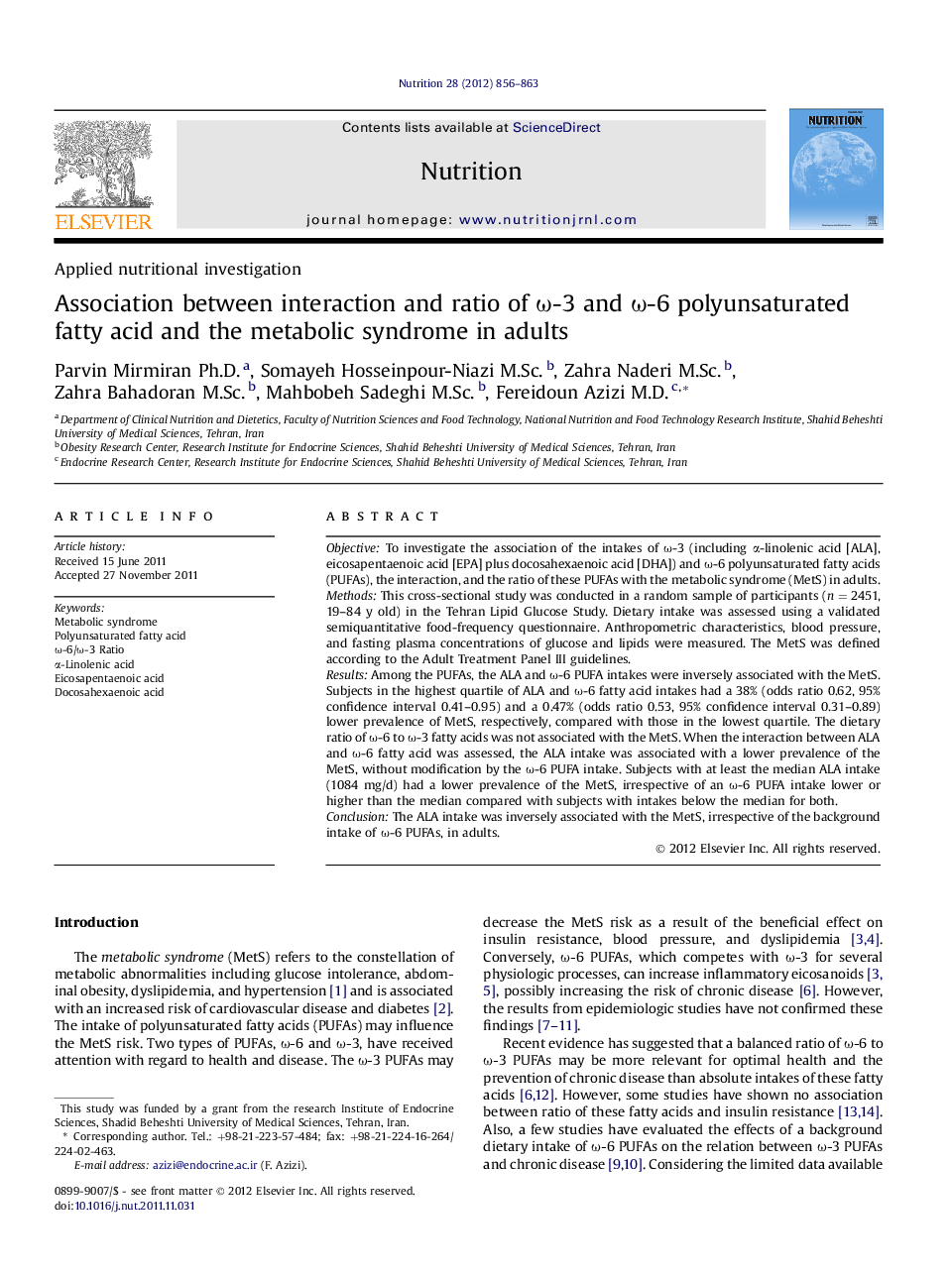| Article ID | Journal | Published Year | Pages | File Type |
|---|---|---|---|---|
| 3276538 | Nutrition | 2012 | 8 Pages |
ObjectiveTo investigate the association of the intakes of ω-3 (including α-linolenic acid [ALA], eicosapentaenoic acid [EPA] plus docosahexaenoic acid [DHA]) and ω-6 polyunsaturated fatty acids (PUFAs), the interaction, and the ratio of these PUFAs with the metabolic syndrome (MetS) in adults.MethodsThis cross-sectional study was conducted in a random sample of participants (n = 2451, 19–84 y old) in the Tehran Lipid Glucose Study. Dietary intake was assessed using a validated semiquantitative food-frequency questionnaire. Anthropometric characteristics, blood pressure, and fasting plasma concentrations of glucose and lipids were measured. The MetS was defined according to the Adult Treatment Panel III guidelines.ResultsAmong the PUFAs, the ALA and ω-6 PUFA intakes were inversely associated with the MetS. Subjects in the highest quartile of ALA and ω-6 fatty acid intakes had a 38% (odds ratio 0.62, 95% confidence interval 0.41–0.95) and a 0.47% (odds ratio 0.53, 95% confidence interval 0.31–0.89) lower prevalence of MetS, respectively, compared with those in the lowest quartile. The dietary ratio of ω-6 to ω-3 fatty acids was not associated with the MetS. When the interaction between ALA and ω-6 fatty acid was assessed, the ALA intake was associated with a lower prevalence of the MetS, without modification by the ω-6 PUFA intake. Subjects with at least the median ALA intake (1084 mg/d) had a lower prevalence of the MetS, irrespective of an ω-6 PUFA intake lower or higher than the median compared with subjects with intakes below the median for both.ConclusionThe ALA intake was inversely associated with the MetS, irrespective of the background intake of ω-6 PUFAs, in adults.
